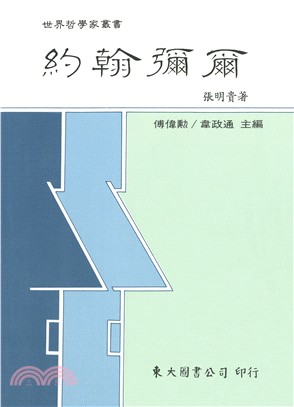The History Of The Theory Of Structures 2E - Searching For Equilibrium
- 系列名:Edition Bautechnikgeschichte / Construction
- ISBN13:9783433032299
- 出版社:John Wiley & Sons Inc
- 作者:Kurrer
- 裝訂/頁數:精裝/1212頁
- 規格:24.4cm*17cm (高/寬)
- 版次:2
- 出版日:2018/06/06
商品簡介
Brief insights into customary methods of calculation backed up by historical facts help the reader to understand the history of structural mechanics and earth pressure theory from the point of view of modern engineering practice. This approach also makes a vital contribution to the teaching of engineers.
Dr. Kurrer manages to give us a real feel for the different approaches of the players involved through their engineering science profiles and personalities, thus creating awareness for the social context. The 260 brief biographies convey the subjective aspect of theory of structures and structural mechanics from the early years of the modern era to the present day. Civil and structural engineers and architects are well represented, but there are also biographies of mathematicians, physicists, mechanical engineers and aircraft and ship designers. The main works of these protagonists of theory of structures are reviewed and listed at the end of each biography. Besides the acknowledged figures in theory of structures such as Coulomb, Culmann, Maxwell, Mohr, Müller-Breslau, Navier, Rankine, Saint-Venant, Timoshenko and Westergaard, the reader is also introduced to G. Green, A. N. Krylov, G. Li, A. J. S. Pippard, W. Prager, H. A. Schade, A. W. Skempton, C. A. Truesdell, J. A. L. Waddell and H. Wagner. The pioneers of the modern movement in theory of structures, J. H. Argyris, R. W. Clough, T. v. Kármán, M. J. Turner and O. C. Zienkiewicz, are also given extensive biographical treatment. A huge bibliography of about 4,500 works rounds off the book.
New content in the second edition deals with earth pressure theory, ultimate load method, an analysis of historical textbooks, steel bridges, lightweight construction, theory of plates and shells, Green's function, computational statics, FEM, computer-assisted graphical analysis and historical engineering science. The number of pages now exceeds 1,200 - an increase of 50% over the first English edition.
This book is the first all-embracing historical account of theory of structures from the 16th century to the present day.
作者簡介
He then returned to university to study civil engineering and physical engineering sciences at TU Berlin, the city's science and technology university. As a tutor in the Theory of Structures Department at TU Berlin between 1977 and 1981, one of Karl-Eugen Kurrer's most important teaching and learning experiences was grasping the basic principles of structural analysis from the historical point of view. The intention of his handwritten introductory lecture notes on the history of each method of structural analysis was to help students understand that theory of structures, too, is the outcome of a socio-historical everyday process in which they themselves play a part and, in the end, help to shape. Another goal was to create a deeper sense of the motivation for and enjoyment of the learning of structural analysis. It was crucial to overcome the formula-type acquisition of the subject matter by introducing a didactic approach to the fundamentals of theory of structures through their historical appreciation. By 1998 this had evolved into a plea for a historico-genetic approach to the teaching of theory of structures.
His dissertation "Entwicklung der Gewolbetheorie vom 19. Jahrhundert bis zum heutigen Stand der Wissenschaft am Beispiel der Berechnung einer Bogenbrucke" (the development of vault theory from the 19th century to today using the example of structural calculations for an arch bridge) was completed in 1981. Since 1980, his many articles on the history of science and technology in general and construction history in particular have appeared in journals, newspapers, books and exhibition publications.
Karl-Eugen Kurrer completed his PhD - on the internal kinematic and kinetic of tube vibratory mills (advisers: Eberhard Gock, Wolfgang Simonis, Gerd Brunk) - with the highest level of distinction, summa cum laude, at TU Berlin in 1986 and went on to carry out externally funded research on energy efficiency in industry. He contributed to the development of a new eccentric vibratory mill that uses 50% less energy than comparable models. After 1995 the design successfully established itself on the international machine market (US and EU patents). The head of the "Eccentric vibratory mill" team at Clausthal University of Technology, Prof. Dr. Eberhard Gock (1937-2016), received an innovation award ("Technologietransferpreis der Industrie- und Handelskammer Braunschweig") for this work in 1998.
Summaries of the research results from Dr. Kurrer's work at the interface between mechanical process engineering, machine dynamics and raw materials engineering appeared in issues 124 and 282 of series 3 (process engineering) of the progress reports published by the VDI (Association of German Engineers), and also in numerous presentations and journal publications at home and abroad.
Between 1989 and 1995, Dr. Kurrer was employed at the Department of Antenna Design of Telefunken Sendertechnik GmbH (head of department: Dr.-Ing. Peter Bruger) in Berlin as a developer of structural systems for large long-, medium- and short-wave antenna systems. He worked on the further development of Telefunken's own program suite for the calculation, dimensioning and design of cable networks for short-wave antennas according to third-order theory. He also contributed to the design of a rotating steel short-wave curtain antenna.
For nearly 40 years, Karl-Eugen Kurrer has carried out research on the subject of construction history with a special emphasis on theory of structures. Since 1992, he has been involved in the conference series entitled "Between Mechanics and Architecture", which was established by Patricia Radelet-de Grave and Edoardo Benvenuto.
Since 1996, Dr. Kurrer has been Chair of the VDI's Working Group on the History of Technology in Berlin. Between 1996 and February 2018, he was chief editor of Stahlbau and (from 2008) Steel Construction - Design and Research, journals published by Ernst & Sohn (now a Wiley brand). In his capacity as Chair of the History of Technology Working Group, Dr. Kurrer organises, together with Prof. Werner Lorenz (Brandenburg University of Technology Cottbus-Senftenberg), eight lectures on construction history every year for the Deutsches Technikmuseum Berlin. In this capacity, Dr. Kurrer has also organised more than 330 events at the Deutsches Technikmuseum Berlin between 1996 and 2017 - some 140 of them on the history of construction.
For his commitment to the field of the history of technology, Dr. Kurrer was awarded the VDI's "Medal of Honour" in 2016.
Dr. Kurrer was chairman of the scientific committee of the 3rd International Congress on Construction History (20-24 May 2009, Brandenburg University of Technology Cottbus-Senftenberg, Germany).
He has published more than 180 papers and several monographs, e.g. Geschichte der Baustatik (2002, 540pp.), The History of the Theory of Structures. From Arch Analysis to Computational Mechanics (2008, 848pp.) and Geschichte der Baustatik. Auf der Suche nach dem Gleichgewicht (2016, 1184pp.). The first edition of The History of the Theory of Structures was reviewed in 50 international journals.
In recognition of his outstanding scientific achievements in the field of the history of construction, Brandenburg University of Technology Cottbus-Senftenberg awarded him an honorary doctorate on 18 October 2017.
主題書展
更多主題書展
更多書展本週66折
您曾經瀏覽過的商品
購物須知
外文書商品之書封,為出版社提供之樣本。實際出貨商品,以出版社所提供之現有版本為主。部份書籍,因出版社供應狀況特殊,匯率將依實際狀況做調整。
無庫存之商品,在您完成訂單程序之後,將以空運的方式為你下單調貨。為了縮短等待的時間,建議您將外文書與其他商品分開下單,以獲得最快的取貨速度,平均調貨時間為1~2個月。
為了保護您的權益,「三民網路書店」提供會員七日商品鑑賞期(收到商品為起始日)。
若要辦理退貨,請在商品鑑賞期內寄回,且商品必須是全新狀態與完整包裝(商品、附件、發票、隨貨贈品等)否則恕不接受退貨。
























